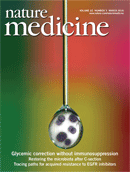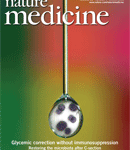 What? This is the act of applying vaginal bacteria to new-borns, not delivered vaginally to ensure exposure to the mother’s microbiome. Whilst at present, we don’t yet know whether the many conditions associated with C-section—including reported higher rates of allergies, asthma, atopic dermatitis, and even an association with autism diagnosis—are due to lack of exposure to the maternal vaginal microbiome to which, until recently, every surviving mammal had been exposed at birth.[1] Numerous people are considering this to be a prudent approach, as declining diversity of bacterial cohabitants are linked to increased problems with immune regulation and subsequent development of illness.
What? This is the act of applying vaginal bacteria to new-borns, not delivered vaginally to ensure exposure to the mother’s microbiome. Whilst at present, we don’t yet know whether the many conditions associated with C-section—including reported higher rates of allergies, asthma, atopic dermatitis, and even an association with autism diagnosis—are due to lack of exposure to the maternal vaginal microbiome to which, until recently, every surviving mammal had been exposed at birth.[1] Numerous people are considering this to be a prudent approach, as declining diversity of bacterial cohabitants are linked to increased problems with immune regulation and subsequent development of illness.
However, a recent paper in the British Medical Journal suggested that using vaginal microbes to seed the microbiome of a caesarean born child may be best avoided.[2] Based on data from vaginal seeding experiments to date,[3] the BMJ authors cautioned against use of the approach on the grounds that there is not yet sufficient evidence to recommend the procedure and, more importantly, because there are potential risks associated with the transmission of known pathogens.
The BMJ has produced an audio review if you are interested.
Comment
It should be clear to all proposing this intervention that, if a mother tests positive for any pathogens that could harm her child, clinicians/parents should not perform vaginal seeding. (Routine testing for Group B strep and other pathogens provides an evidence-based way to determine whether you should use this method.)
But based on the evidence to date that your child’s microbiome at birth is important and modifiable, and as a result offers a unique opportunity to enhance diversity and resilience of the microbiome. Perhaps it is prudent to say that parents should make up their own minds how much evidence is enough given the exceptional, evolutionarily sound logic and clear health advantages of vaginal birth over C-section.
References
[1] Kristensen K, Henriksen L. Cesarean section and disease associated with immune function. J Allergy Clin Immunol. 2016 Feb;137(2):587-90. View Abstract
[2] Cunnington AJ, Sim K, Deierl A, Kroll JS, Brannigan E, Darby J. “Vaginal seeding” of infants born by caesarean section. BMJ. 2016 Feb 23;352:i227. (No Abstract Available)
[3] Dominguez-Bello MG, De Jesus-Laboy KM, Shen N, Cox LM, Amir A, Gonzalez A, Bokulich NA, Song SJ, Hoashi M, Rivera-Vinas JI, Mendez K, Knight R, Clemente JC. Partial restoration of the microbiota of cesarean-born infants via vaginal microbial transfer. Nat Med. 2016 Mar;22(3):250-3 View Abstract





